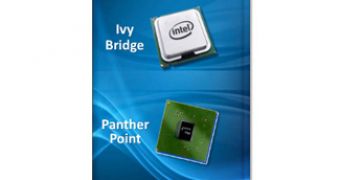Without a doubt, 3D is quite a major topic nowadays, and although one requires a discrete graphics card right now in order to enjoy such content nowadays (when talking about computers, of course), it seems that things will actually change on the future, courtesy of Intel.
So, according to a report by the guys over at Fudzilla, Intel plans to implement native HDMI 1.4 and DisplayPort 1.1 support in their future companion chipset, a move that will certainly push forward the range of applications for these range of products.
We must not forget that, similar to Sandy Bridge, Ivy Bridge CPUs will also offer advanced built-in graphics that, coupled with the HDMI 1.4 interface, translates into native 3D support, without the need for the addition of a discrete graphics card.
Of course, while the 3D experience provided by the Sandy Bridge built-in graphics won't really come close to the one delivered by the NVIDIA and/or AMD GPUs, it will most likely be sufficient for multimedia playback, which is what most people employ their home systems for anyway.
As some of you might remember, we've already detailed within a previous article some of the features we should come to expect from this future Ivy Bridge companion chipset, one of the most important being the native support for the USB 3.0 (SuperSpeed USB), a move that will certainly turn this ultra-fast connectivity solution mainstream.
In fact, after taking a look at some of the features the future CPU and overall platform will be able to provide, we'd dare to say that it will actually provide a much better value than the current Core CPUs and it will represent an important leap forward in Intel's short and mid-term strategies.
And we're pretty sure that, should things go according to plan, Ivy Bridge will make users forget all about Intel's bothersome Sandy Bridge design flaw.

 14 DAY TRIAL //
14 DAY TRIAL //